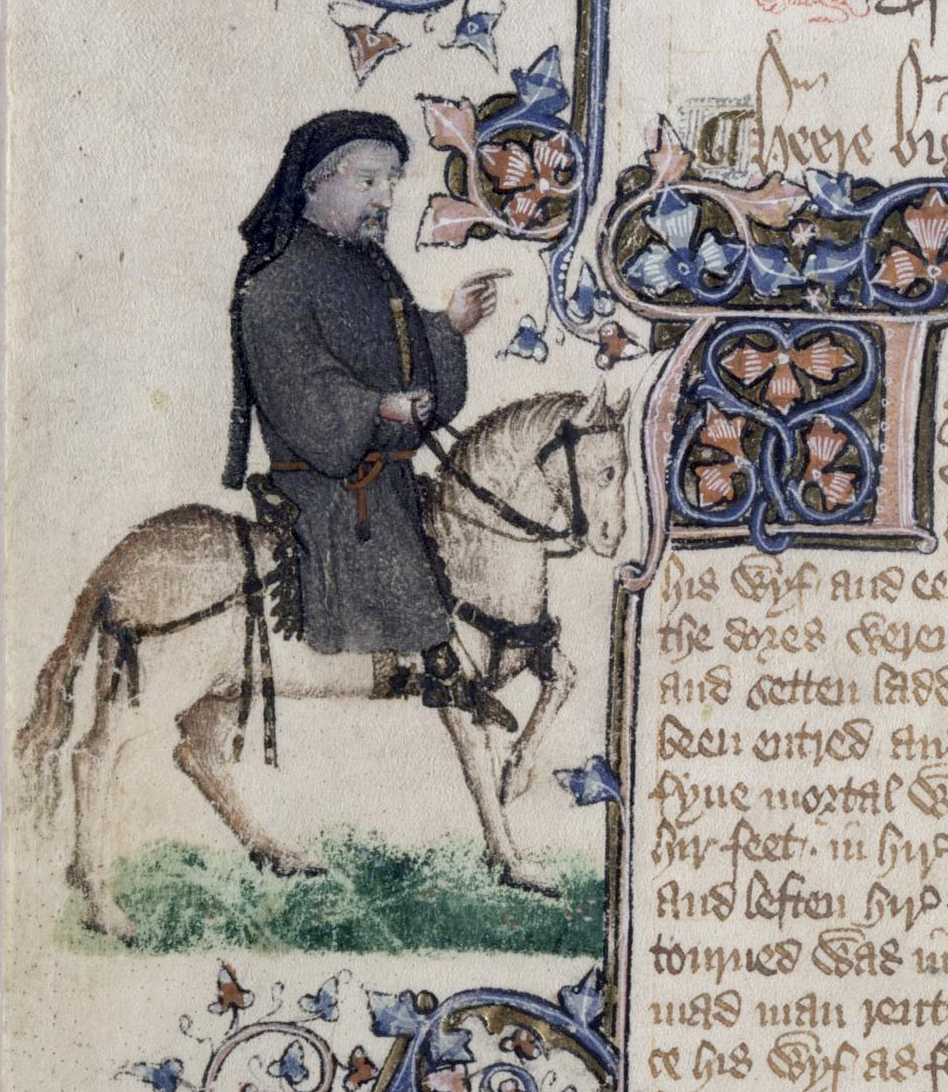Geofferey Chaucer's Canterbury Tales serves as a complex poetic satire of the late-Medieval English society he lived in. In the general prologue, Chaucer introduces all of the characters in the rest of the tale, accounting for their poor character traits as lightly as possible. However two characters in particular give examples of how Chaucer does this, the Pardoner and the Oxford Cleric satirically represent two different types of people in Chaucer's society.
The Pardoner's position in the Church is to collect indulgences, that is money "donated" to the church to "forgive" sin. However, in Chaucer's presentation of the character shows him to be corrupt, greedy and guilty of simony. In his portrayal he accuses the Pardoner of being two-faced by saying, "he sew'd a holy relic on his cap; his wallet lay before him on his lap..." and also that "by his flatteries and prevarication made monkeys of the priest and congregation." Chaucer further makes vicious the Pardoner's character with the following lines:
"But best of all he sang an Offeratory,
For well he knew when that song was sung
He'd have to preach and tune his honey-tongue
And (well he could) win silver from the crowd.
That's why he sang so merrily and loud."
Simony and other misuses of ecclesiastical powers are major themes in Chaucer's work. Through the satirical illustrations of the Pardoner, the priests, the nun, the monk, the parson, and other characters, Chaucer makes [negative] political commentary on the issues of his time.
The Oxford Cleric is made fun of as well, but not to the degree of the Pardoner. The Cleric is said to "had found no preferment in the Church", indicating his lack of piety, but on the bright side, "he was too unworldly to make search for secular employment." And "whatever money from his friends he took he spent on learning or another book...", whereas the Pardoner took money from people for his own pleasure and in the Church's name.
Even though the Cleric may be just as "in-virtuous" as the Pardoner, I would argue that the Pardoner's sin is magnified greater due to it's ecclesiastical corruption. The comparison of these character's, and others, demonstrates Chaucer's dissatisfaction with the Church in his time.

